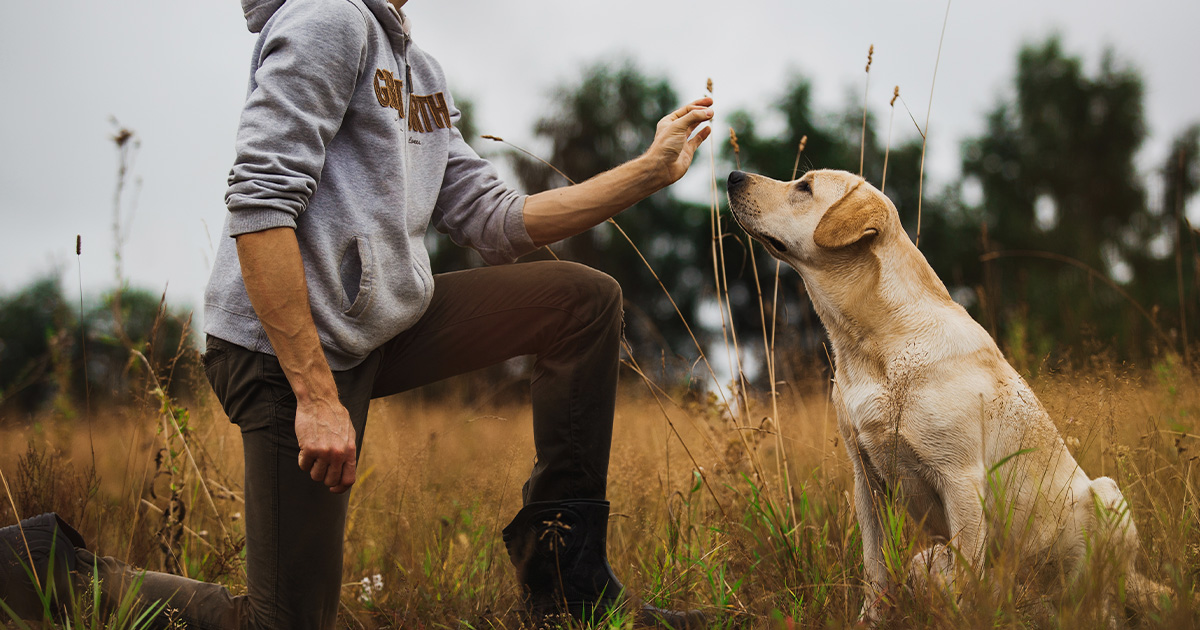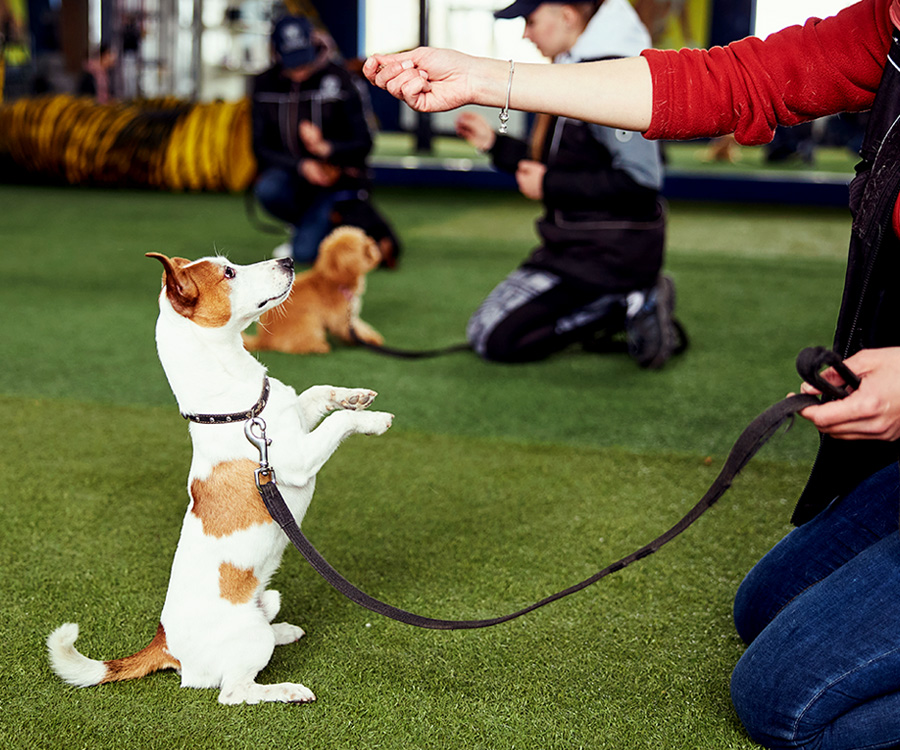How Dog Training Can Improve Your Pet’s Behavior Quickly
The Ultimate Guide to Pet Training: Change Your Pet dog's Habits
Efficient canine training is important for cultivating a harmonious relationship between family pets and their proprietors. This guide not just intends to outfit you with the essential devices to transform your pet's habits but also invites you to check out just how these fundamental principles can lead to a deeper link with your family pet.
Understanding Dog Habits
Comprehending canine behavior is essential for effective training and a harmonious partnership between pets and their proprietors. A pet dog's actions is influenced by a mix of genes, atmosphere, and experiences. Dog training. Acknowledging these elements allows owners to customize their training approaches to fulfill the private demands of their animals
Dogs interact primarily via body movement, vocalizations, and face expressions. For example, a wagging tail can show enjoyment or happiness, while a tucked tail might signify concern or entry. Observing these hints allows owners to respond appropriately, enhancing favorable actions and addressing adverse ones properly.
In addition, recognizing the social structure of dogs can supply insights right into their behavior. Canines are pack pets, and they flourish in an organized atmosphere. Developing clear limits and constant regulations can prevent complication and promote a complacency.
In addition, acknowledging the natural instincts of canines, such as need to dig or go after, is essential. These reactions can be rerouted via suitable electrical outlets, such as play or workout. By comprehensively comprehending these behavioral aspects, proprietors can promote a positive training experience, inevitably resulting in a obedient and well-adjusted canine companion.
Vital Training Techniques
Efficient pet training depends on a selection of crucial techniques that can significantly improve the understanding process for both the pet dog and the owner. One essential strategy is favorable support, which involves gratifying desirable habits with deals with, appreciation, or playtime. This technique motivates pets to duplicate the actions that lead to favorable outcomes, promoting a relying on relationship between the animal and proprietor.
An additional trick strategy is uniformity in assumptions and commands. Using the same verbal cues and hand signals helps the dog comprehend what is called for, lowering complication and advertising quicker discovering. In addition, establishing clear boundaries and rules is critical for efficient communication.
Socialization is also a necessary component of training. Subjecting canines to different settings, individuals, and other animals helps them create ideal social abilities and minimizes stress and anxiety in unknown situations.
Lastly, perseverance and timing are crucial. Training sessions must be quick however frequent, guaranteeing that the canine continues to be involved and receptive. By utilizing these vital methods, owners can develop a structured and favorable training experience that advertises great behavior and reinforces the bond with their canine companions.
Developing a Training Schedule
Just how can a well-structured training routine boost a pet dog's learning experience? A training timetable offers consistency, making sure that dogs get normal, concentrated instruction. This predictability aids dogs recognize what is expected of them, strengthening their learning and permitting for better retention of behaviors and commands.
When producing a training timetable, it is necessary to consider the pet dog's age, type, and private personality. Youthful puppies might take advantage of shorter, a lot more frequent sessions, while adult pet dogs may flourish with longer, much less constant training periods. Integrating a variety of tasks can also keep the sessions engaging, avoiding dullness and advertising interest for understanding.
Additionally, organizing training sessions at specific times of the day can help strengthen a regimen. For circumstances, pairing training with daily walks or playtime can develop a favorable organization with understanding. It is additionally crucial to include time for reinforcement, such as treats or praise, to award preferred actions immediately.
Last but not least, flexibility is crucial. While consistency is essential, being versatile to the pet's state of mind or power degree can boost their learning experience. A well-crafted training schedule ultimately lays the structure for reliable interaction and a more powerful bond in between the dog and owner.
Usual Educating Difficulties
Regardless of having a well-structured training timetable, pet dog owners typically run into numerous difficulties during the training process. One usual concern is variance in hints and commands. When several family participants utilize different terms or tones, a dog might end up being baffled, hindering its capacity to discover effectively.
An additional regular difficulty is disturbance. Dog training. Pets are normally curious animals, and exterior stimuli such as various other animals, sounds, or individuals can divert their interest during training sessions. This calls for owners to content create a regulated environment or progressively introduce diversions to reinforce emphasis
Furthermore, differing energy degrees can impact training end results. High-energy canines might have a hard time to work out down and concentrate, while a lot more laid-back types could need extra inspiration to involve. Tailoring the training technique to fit the individual pet's personality is essential for success.

Building a Strong Bond
A solid bond between a dog and its owner is important for effective training and general well-being. Dog training. This relationship cultivates depend on, which is vital for effective communication throughout the training procedure. When a pet feels linked and safe and secure to its owner, it is most likely to respond favorably to commands and hints
To construct this bond, uniformity is crucial. Establishing a routine that includes routine feeding, exercise, and training sessions assists develop a sense of stability. Furthermore, favorable reinforcement methods, such as deals with, praise, and play, enhance preferred actions while enhancing the psychological link.
Socializing is one more important facet of bond-building. Revealing your canine to different settings, people, and other animals helps them really feel a lot more comfy and positive, enhancing the bond with their owner. Participating in tasks with each other, such as strolling, playing fetch, or taking part in obedience training, advertises teamwork and common satisfaction.
Final Thought

Understanding canine behavior is vital for effective training and an unified partnership in between pets and their proprietors.Reliable pet training depends on a range of important methods that can dramatically boost the discovering procedure for both the owner and the canine.Regardless of having a well-structured training schedule, dog proprietors often run into different obstacles during a fantastic read the training procedure.In verdict, efficient pet training counts on an extensive understanding of canine actions, the application of vital methods, and the establishment of an organized training timetable. By stressing positive reinforcement and consistency, pet dog proprietors can considerably enhance their pet dogs' actions, eventually ensuring a harmonious partnership and advertising the health of both the canine and its setting.